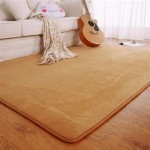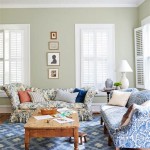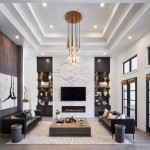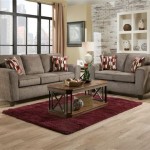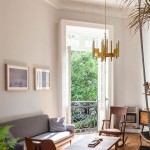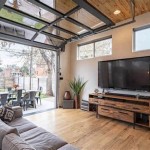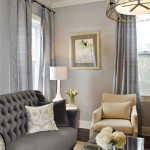Pictures of Living Room Decorations: A Comprehensive Guide
The living room, often considered the heart of a home, serves as a central gathering space for families and individuals alike. Its decoration significantly impacts the overall ambiance and functionality of the residence. Visual inspiration, typically gleaned from pictures of living room decorations, provides a starting point for homeowners and designers seeking to create appealing and comfortable spaces. Understanding the elements that contribute to successful living room design is crucial for translating inspiration into tangible results. This article explores key aspects of living room decoration, providing insights that can guide the selection and arrangement of furnishings, accessories, and color palettes.
Defining the Room's Purpose and Style
Before embarking on any decoration project, it is imperative to clearly define the primary purpose of the living room. Is it intended as a formal entertaining space, a casual family room, a multi-functional area incorporating a home office, or a combination of these? The intended use will directly influence the furniture selection, layout, and overall design aesthetic. For instance, a formal living room might prioritize elegant seating arrangements and sophisticated accessories, while a family room would benefit from durable, comfortable furnishings and versatile storage solutions.
Identifying a cohesive style is equally critical. A multitude of decorating styles exist, each with its distinct characteristics. Some prevalent styles include:
- Modern: Characterized by clean lines, minimalist aesthetics, and a focus on functionality. Typically features neutral color palettes, geometric shapes, and natural materials like wood and metal.
- Traditional: Emphasizes classic elegance, incorporating richly patterned fabrics, antique furniture, and ornate details. Often includes warm color schemes, symmetrical arrangements, and traditional artwork.
- Contemporary: A constantly evolving style reflecting current trends, often incorporating elements from other styles. Emphasizes comfort, functionality, and incorporating natural light.
- Bohemian: A relaxed and eclectic style showcasing a mix of textures, patterns, and global influences. Includes vibrant colors, vintage furniture, and collected accessories.
- Rustic: Draws inspiration from nature, featuring natural materials like wood and stone. Often integrates warm colors, comfortable furniture, and handcrafted accents.
- Minimalist: Focuses on simplicity and functionality, eliminating unnecessary clutter. Characterized by neutral color palettes, clean lines, and essential furniture pieces.
Pictures of living room decorations often showcase a distinct style, providing visual cues for selecting complementary furniture, accessories, and color schemes. It is not necessary to adhere rigidly to a single style; often, a blend of different styles can create a unique and personalized look.
Selecting Furniture and Arranging the Layout
Furniture is the cornerstone of any living room design. The selection should prioritize both functionality and aesthetics, considering the room's size, purpose, and style. A sofa is typically the largest and most important piece of furniture, acting as the focal point of the room. Its size and style should be proportionate to the room's dimensions. Sectional sofas are ideal for larger living rooms, providing ample seating for families and gatherings. Loveseats or smaller sofas are better suited for smaller spaces.
Accompanying the sofa are armchairs, coffee tables, and side tables. Armchairs should complement the sofa in style and color, providing additional seating options. The coffee table serves as a central surface for drinks, books, and decorative items. Its height and size should be proportionate to the sofa, allowing for comfortable reach. Side tables provide convenient surfaces for lamps, beverages, and other necessities.
The arrangement of furniture is crucial for creating a comfortable and functional living room. A common arrangement involves placing the sofa opposite the focal point of the room, such as a fireplace or television. Armchairs are then positioned on either side of the sofa, creating a conversational grouping. Coffee tables are placed in the center of the seating arrangement, within easy reach of all occupants. The flow of traffic should be considered when arranging furniture, ensuring that pathways are clear and unobstructed.
Pictures of living room decorations often demonstrate effective furniture arrangements, illustrating how to maximize space and create visually appealing layouts. Pay close attention to the placement of furniture in relation to windows, doors, and other architectural features.
Incorporating Color, Texture, and Accessories
Color plays a significant role in setting the mood and atmosphere of the living room. The color palette should reflect the desired style and create a sense of harmony. Neutral colors, such as beige, gray, and white, provide a versatile backdrop for other colors and textures. They can be used to create a calm and relaxing atmosphere. Warmer colors, such as yellows, oranges, and reds, can add energy and vibrancy to the room. Cooler colors, such as blues, greens, and purples, can create a sense of tranquility and sophistication.
Texture adds depth and visual interest to the living room. Different textures can be incorporated through the use of fabrics, rugs, and wall coverings. Plush fabrics, such as velvet and chenille, can add a touch of luxury and comfort. Natural textures, such as wood, stone, and linen, can create a warm and inviting atmosphere. Rugs can define seating areas and add warmth and texture to the floor.
Accessories are the finishing touches that personalize the living room and reflect the homeowner's individual taste. Artwork, lamps, cushions, throws, and decorative objects can all contribute to the overall aesthetic. Artwork should be chosen to complement the style and color palette of the room. Lamps provide both functional lighting and decorative accents. Cushions and throws add comfort and texture to the seating arrangement. Decorative objects, such as vases, sculptures, and candles, can add personality and visual interest to the room.
Pictures of living room decorations provide abundant inspiration for incorporating color, texture, and accessories. Observe how different color combinations and textures create different moods and atmospheres. Note the placement and arrangement of accessories, paying attention to scale, proportion, and balance.
Lighting is often overlooked but is a critical element to incorporate within a space. The right lighting can transform a room, creating different moods and highlighting specific features. It is important to consider the different types of lighting available, including ambient, task, and accent lighting. Ambient lighting provides overall illumination, while task lighting is focused on specific activities, such as reading or working. Accent lighting is used to highlight artwork, architectural features, or decorative objects.
Window treatments play a crucial role in controlling light and privacy in the living room. Curtains, blinds, and shades can all be used to filter sunlight and create a more comfortable atmosphere. The choice of window treatments should complement the style and color palette of the room. Sheer curtains can provide privacy while still allowing natural light to filter through. Blackout curtains can block out light completely, creating a darker and more private space.
Plants can add life and vibrancy to the living room. Indoor plants can improve air quality, reduce stress, and add a touch of nature to the space. Choose plants that are appropriate for the lighting conditions in the room. Low-light plants, such as snake plants and ZZ plants, are ideal for rooms with limited natural light. Plants can be placed on shelves, tables, or the floor, adding a touch of greenery to the room.
The arrangement of décor can vary upon the layout of the room. Wall décor placement can create different perceptions of the room's size. For smaller rooms, it is better to avoid dark colors, and to use minimal amounts of wall decorations. Larger rooms have more freedom on the colors and sizes of decorations that can be placed on the wall.
Ultimately, decorating a living room is a personal endeavor. By carefully considering the room's purpose, style, furniture arrangement, and incorporation of color, texture, and accessories, it is possible to create a space that is both functional and aesthetically pleasing. The inspiration provided by pictures of living room decorations can serve as a valuable guide in this process, helping homeowners and designers translate their vision into reality.

80 Gorgeous Living Room Decorating Ideas For Every Style

80 Gorgeous Living Room Decorating Ideas For Every Style

Small Living Room Ideas Decorating

900 Living Rooms Ideas In 2025 Decor Room Interior Design

4 Need To Know Tips For Decorating A Small Space

95 Inspiring Living Room Ideas To Create A Comfortable Space

Living Room Inspiration Design Ideas Farrow Ball

95 Inspiring Living Room Ideas To Create A Comfortable Space

Living Room Ideas Furniture Decor Pottery Barn

Pottery Barn Living Room Traditional Other By Houzz Ie

